Light predates matter!
About 13.8 billion years ago,
just about 380,000 years after the Big Bang,
a proton and an electron met to form an atom of hydrogen and in the process released a photon.
This is how the first light in the universe was born.
Light not only enables us to see
the colorful world around us
but also gives us life sustaining energy.
Without light there is no Holi, no Diwali!
In the last fifty years or so, we have learned to harness the power of light for the advancement of technologies and innovative applications that are brightening our life every day.
Overview
Photonics is about using the power of photons, the particle property of light. This property deals with the way light is created, transmitted, modulated, manipulated and detected. Whereas, the other property of light is the wave form, which is observed when light bends through a prism.
In photonics-based equipment and networks, information is transferred using light, in contrast to electronics-based equipment and networks, where information is transferred using electrons.
Photonics, which already has a significant presence in today’s backbone networks, is expected to largely replace electronics in the next ten years due to its huge advantages in available bandwidth, cost efficiencies, and energy usage.
In 2022, the global photonics market accounted for $770 billion and is expected to reach $1.39 trillion in the next ten years.
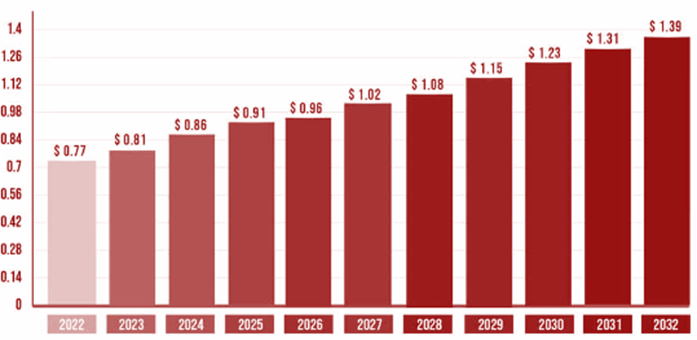
Source: Precedence Research
India Story
Under the Capital Investment Scheme, the Government of India has earmarked Rs.3000 crore (about $365 millions) to states for capital projects on optic fiber cable network.
To prepare the technical workforce in photonics, leading Indian universities like Indian Institutes for Technology have set up research and education centers for optics and photonics.
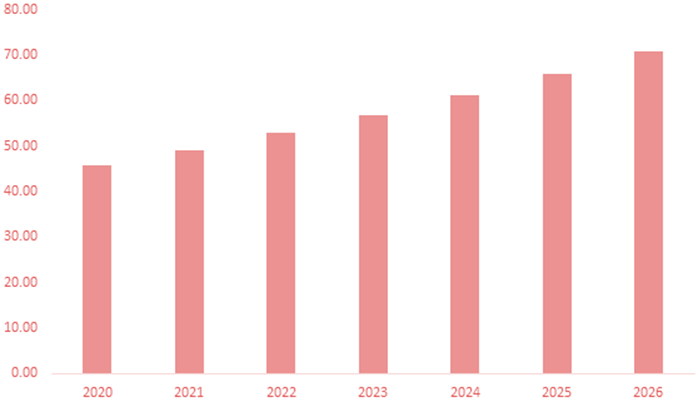
Source: IndustryARC
Enabling Technologies
Semiconductor Fabrication
|
Material Science
|
|
Produces lasers, LEDs and integrated circuits used in photonics
|
Enables precise design and manufacturing of optical components and optical fibers
|
Microfabrication (MEMS)
|
Nanotechnology
|
|
Makes miniature photonic components, e.g., micro-mirrors and micro-lenses
|
Allows creation of nanostructures with unique optical properties
|
Optoelectronics
|
Laser Technology
|
|
Integrates photonics with electronics for two-way information exchange
|
Supports precision manufacturing and operations of photonics-based devices
|
Design Software
|
Clean Room Facilities
|
|
Aids design and simulation of photonic devices
|
Essential for fabrication of delicate, untainted material and components for photonics
|
All Photonics Network (APN)
-
APN uses photonics in every aspect of a computer network, from network devices to terminals.
-
It offers lower power consumption, higher quality, greater capacity and less delay.
-
NTT expects APN to provide the platform for Digital Twin Computing and Cognitive Harmonization of ICT resources by 2030 to enable Innovative Optical and Wireless Network (IOWN).
Innovations and US patents filing for photonics technologies have evolved over time.
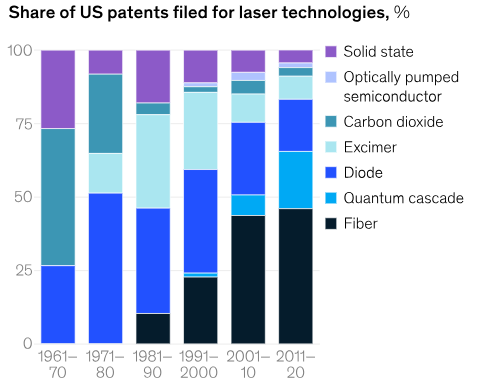
Source: McKinsey & Co.
Applications
Key applications of photonics include:
In recent years, applications are evolving in:
Some Interesting Use Cases
Vehicle Computer Vision System
Allow vehicles to sense their environment in real-time and accordingly make driving decisions.
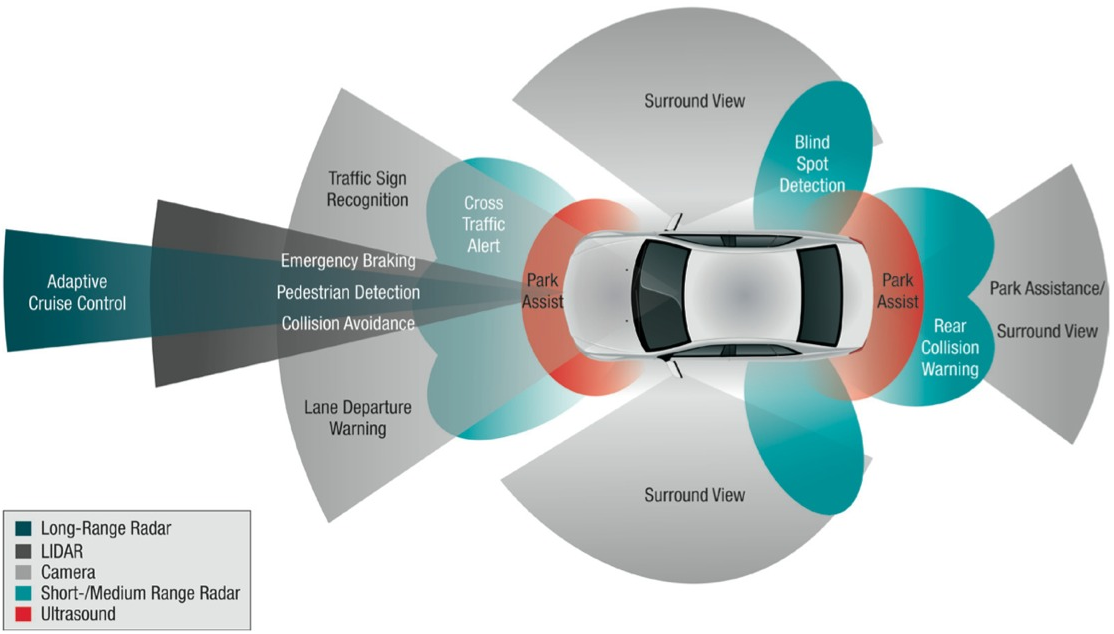
Source: Michigan Tech
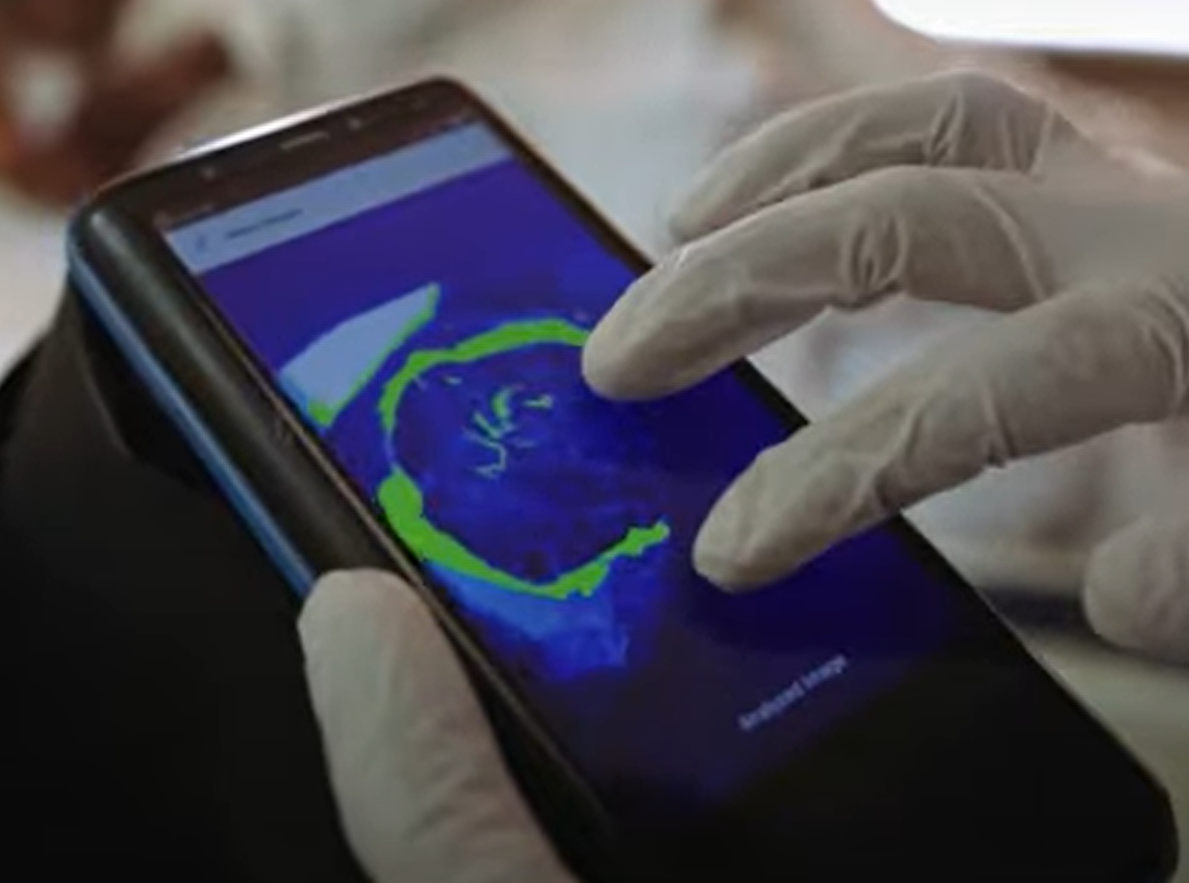
Source: Adiuvo Diagnostics
Comprehensive Wound Infection Assessment
Using fluorescence photonics and multispectral imaging to conduct instantaneous AI-based optical biopsy for the bacterial recognition in acute, chronic, and traumatic wounds that are hard to heal.
Augmented Reality Glasses
Use tiny projector using waveguides, beam splitters, and optical techniques to overlay computer generated image on the real-world vision.

Source: TriLite
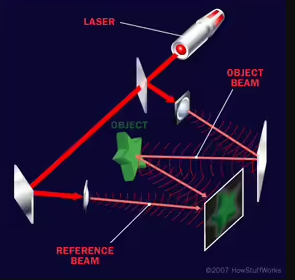
Source: HowStuffWorks
Holographic Projections
Using photonic components, such as lasers, lenses, mirrors, and beam splitters to record a 3-D image and reconstruct it simultaneously or at a later time on a 2-D surface.
AI/ML
Artificial intelligence and machine learning algorithms operate autonomous drone in real-time.
Who Would be Interested?
Healthcare and Medical Devices
-
Telemedicine and remote surgeries
-
Laser-based procedures and treatments
-
Imaging devices and image processing
-
Medical devices
Defense and Aerospace
-
Surveillance and reconnaissance
-
Precise target acquisition
-
High-energy laser-based weapons
Energy
-
Solar power plants
-
Energy transmission
-
Grid management
Key Considerations
Photonics is not recognized as a distinctive technology for the purpose of regulations, but applications of photonics would be governed by various rules and regulations. Here are some of them.
Cybersecurity
Since Photonics is used extensively for communication and IoT related capabilities, they may be vulnerable to cybersecurity incidents or breaches such as malware and hacking. The Indian cyber security laws prescribe certain category of cybersecurity incidents which must be mandatorily reported within a prescribed timeline. The Indian Government is also considering a new Digital India Act, purported to replace the existing Indian internet law (Information Technology Act, 2000) which could also have certain implications on the use of Photonics.
Standardization
Integrating photonics technologies into existing systems or infrastructure can be challenging and require standardization. Lack of standardized components and protocols across different manufacturers can hinder widespread adoption of photonics.
In India, the Bureau of Indian Standards (BIS) offers standards for various end-use products, such as consumer electronic goods, sensor, imaging devices. Accordingly, a manufacturer/ importer may be required to comply with the prescribed product technical standard, observe labelling requirements, and obtain a registration for relevant Photonics devices.
Photonic systems rely on precise alignment and stable light sources. Issues like vibration, temperature fluctuations, and component degradation can affect performance and data integrity. So, standardization and regular maintenance are also needed for the reliability and functionality over time, especially in critical applications like healthcare or telecommunications.
Data Protection
In the event personal data is processed it will trigger compliances under data protection laws (for India, the law is the Indian Digital Personal Data Protection Act, 2023. The determination of which entity is the data fiduciary/controller, and the data processor will also need to be undertaken, and the data fiduciary/controller will accordingly need to comply with obligations under relevant data laws.
Some photonic technologies, such as LiDAR, when used in applications involving surveillance may lead to privacy intrusion and compromise security. In such applications, a balance must be observed for individual rights.
Intellectual Property
Like in other advanced technologies, photonics also heavily relies on the protection of Intellectual Property rights. Photonics is a foundational technology making it crucial for inventors to apply for patents to receive strong protection for their inventions. However, it is widely researched and patented field making it difficult to prove novelty and non-obviousness. Lack of awareness about freedom-to-operate can lead to significant infringement risks, which can be avoided by licensing technologies that are under the protection of patents. Disputes can arise over patent ownership, validity, or infringement.
Some aspects of intellectual property in photonics may be covered under copyright, for example software codes used for device control or simulation. However, because of the possibly of manipulation in codes can reduce the ability to determine the level of originality and establish infringement. Generally, it might be better to protect them as trade secrets by maintaining secrecy through limited access to source codes and technical designs. Misappropriation or unauthorized use of trade secrets can have legal consequences.
When licensing agreements are used for the IPs of other parties, disputes may arise over the agreement terms, including fair use, royalty payments, and exclusivity.
Medical Device Rules, 2017 issued under the Drugs and Cosmetics Act, 1940
Devices which perform the functions of diagnosis, mitigation, prevention, treatment, alleviation of any device, assistance for any injury or disability will be governed as a medical device. The Medical Device Rules prescribe requirements for registration, licensing, labelling and import/export related compliances for medical devices. Thus, this would become relevant upon Photonics solutions associated with the healthcare industry.
Taxation
With regards to Permanent Establishments (PE), a PE is constituted in India if a non-resident carries on business in India either through a fixed place of business or through employees / dependent agents (carrying on certain activities on behalf of the non-resident). When a non-resident provides services in India through Photonics, questions may arise as to whether it would constitute a PE for the non-resident in India. If constituted as a PE, then the non-resident could be subject to tax in India for the income associated with such Photonic services. Since the jurisprudence on this issue is still evolving, activities which may constitute a PE, (in similar circumstances as mentioned above) are still not very clear.
Safety and Environmental Issues
Photonics involves the use of high-power lasers which can be harmful to not only the eyesight but also to the cellular structure of biological organisms in some cases. This raises serious safety concerns requiring adherence to safety standards and well-specified regulations, especially when they are used in consumer products. Compliance with safety regulations and standards is critical to avoid legal liability.
Photonics also have environmental concerns, as they can cause light pollution and optical radiation. In addition, their production and disposal involve mining rare-earth elements and handling hazardous materials, which can have environmental consequences. Specific regulations related to sourcing, recycling, and waste management may be needed to reduce any long-term consequences.
Dual-Use
Photonics are advanced technologies which have applications in both commercial and military areas. Because of their potential for use in weapons, they may be subject to regulations related to export controls and technology transfers.
Sources and Further Reading
Prepared By
With contributions by:
Puja Biswas, Associate, IPpro
Varsha Rajesh, Associate, Technology
Late Darren Punnen, Leader, Pharma/Life Sciences
Nishith Desai Associates
For any questions on legal, regulatory, IP and tax issues related to disruptive technologies, reach out to:
Vaibhav Parikh, Leader, TMT and PE/VC Practices; Head, US Operations
vaibhav.parikh@nishithdesai.com
Dr. Milind Antani, Leader, Pharma/Lifesciences and NanoTech Practices
milind.antani@nishithdesai.com
Abhay Porwal, Head, IPpro
abhay.porwal@ipproinc.com
About US
We are an India-centric, research-based global law firm (www.nishithdesai.com) with five offices in India (Mumbai, Bangalore, New Delhi, Mumbai BKC, and GIFT City) and with license to practice Indian law from our international offices in Silicon Valley, New York, Singapore and Dubai. Over 70% of our clients are foreign multinationals and institutional investors and over 84.5% are repeat clients.
We are a firm of specialists and the go-to firm for companies that want to conduct business in India, navigate its complex business regulations, and grow. We are known for handling complex, high-value transactions and cross-border dispute resolution (see Annexure A). And that prestige extends to our engagement with and mentoring the start-up community that brings about industry-changing innovations.
Dedicated to shaping the future of law & society, we have set up a first-of-its kind IOT-driven Blue Sky Thinking & Research Campus named Imaginarium AliGunjan (see Annexure B ) near Mumbai. Our ability to anticipate and address challenges from a strategic, legal and tax perspective in an integrated way (see Annexure C) have won recognitions globally from not just our clients but also government ministries.
For any help or assistance, please contact:
concierge@nishithdesai.com